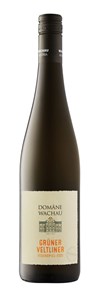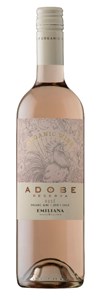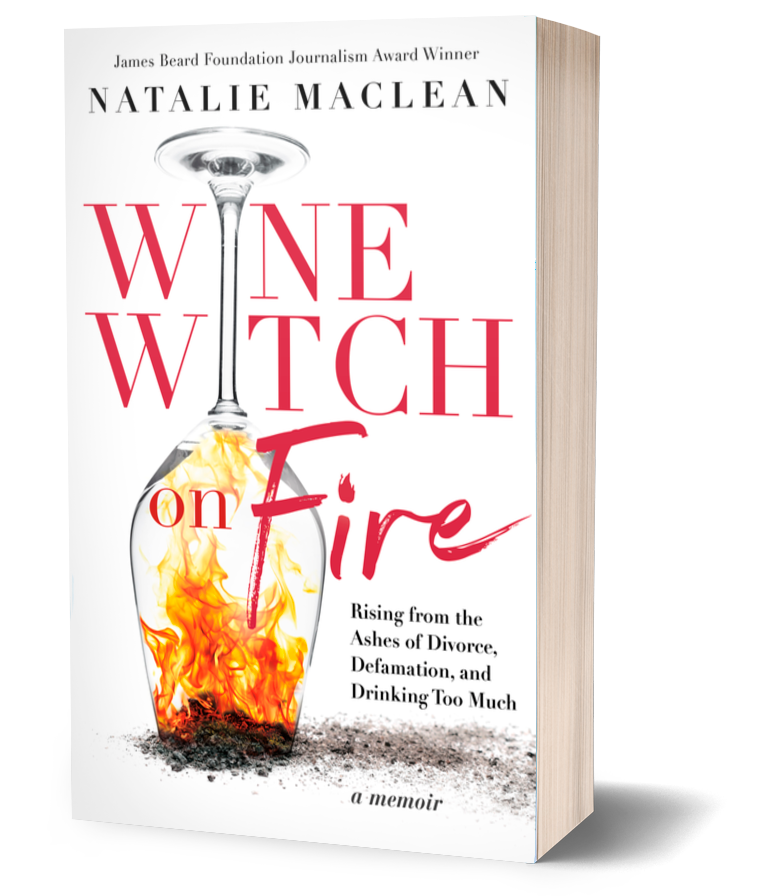Watch this CTV News video here
Many of you are familiar with our resident bon vivant Natalie MacLean who recommends great wines for us, but how does she select those wines? She talks about this in her bestselling book Wine Witch on Fire: Rising from the Ashes of Divorce, Defamation, and Drinking Too Much and joins us now to give us those behind-the-scenes factors that go into her decisions. Welcome, Natalie.
So you’ve been recommending wines to us for several years now. How do you choose which bottles you’ll suggest?
First, I put on a blindfold, then I walk into my cellar or the liquor store – whichever is closest. Kidding. The first consideration is the theme of our segment so if I’m recommending wines for chocolate, they’re all going to have some measure of sweetness, like this Quails Gate Riesling Icewine. However, if our chat is about great end-of-summer wines, I’ll choose from a wider range of styles, though I’ll want to keep them light and refreshing like this Domaine de Lavoie from Rougemont.
Quails’ Gate Estate Winery Riesling Icewine 2019
Okanagan Valley, British Columbia, BC V.Q.A., Canada
Domaine de Lavoie Mousseux Sparkling Rosé 2019
Montérégie, Rougemont, Canada
That’s a wine made in Quebec. Does geography play a role in your choices?
Yes, I like to include at least one Quebec wine or cider in the lineup because the province makes terrific adult beverages. I also believe it’s important to shop and drink local. These producers are usually small, family-owned farms that deserve your support.
What about outside Quebec?
I also like to include a wide range of wines from different countries, from France and Austria like this Domaine Wachau Gruner Veltliner to Australia and California like this full-bodied red wine blend Bonanza. That’s the beauty of wine: it’s wide diversity of style depending on where the wine is from. The French term terroir refers to mostly the soil and climate of where the grapes are grown. That’s as important to wine as good parents or guardians are to children.
Domäne Wachau Terrassen Federspiel Grüner Veltliner 2021
Wachau Qualitätswein, Austria
Bonanza Lot 4 California Cabernet Sauvignon
California, United States
What other factors go into your decision?
Price is important. Most of us don’t have a trust fund so we’re not cracking open a top-tier Bordeaux, like Chateau Margaux, that goes for $500 a bottle. I like to choose wines that are affordable and often taste twice as expensive as they cost like this Cupcake Chardonnay and this Bila-Haut red blend from southern France.
Cupcake Vineyards Chardonnay 2020
California, United States
M. Chapoutier Bila-Haut Occultum Lapidem 2018
Latour-de-France, Roussillon A.P., France
Anything else?
Availability is important. It’s no good hearing about a terrific wine and then not being able to buy it. That’s like looking at the most adorable pair of shoes in the store window but the shop is permanently closed. It’s just so sad. I don’t want people crying in their beer. I pick wines that are either available directly from wineries that will ship directly to your home or the liquor store like this Oyster Bay Sauvignon Blanc and this Adobe Emiliana Rosé from Chile.
Oyster Bay Sauvignon Blanc 2018
Marlborough, New Zealand
Emiliana Adobe Reserva Rosé 2021
Casablanca Valley, Chile
Got a tip for us when we’re shopping in the liquor store without you?
Yes, use my mobile app as it’s like I’m there as your pocket sommelier, weirdly involved in your daily errands. Aside from that, ask a staff member for a recommendation, but first tell them what you already love. That way, they’ll gauge your style and price point and be able to suggest something that’s close but new to you.
Thank you, Natalie.
















